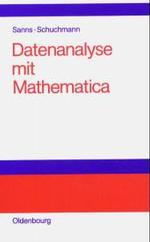- ホーム
- > 洋書
- > 英文書
- > History / World
Full Description
Macedonia is a region that provides its own intriguing questions due to its position on the fringe of the classical Greek world. It is also an area that is of special interest to students of history and archaeology of Roman period Greece, since it was the first to be incorporated in the Roman state. Macedonia shared a similar path of development with Achaea during the imperial period. As provinces far from productive zones and frontiers, both played a minor role in the imperial administrative structure. Beneath this similarity, however, lie many differences: in Macedonia's proximity to the Balkans, its early contact with Rome, its relatively low level of urbanization, its multicultural context and its sizeable economy, which played their own role in the formation of the urban and rural environments.
With a focus on elements of the built environment and human habitat, this book examines old and new archaeological evidence to present a concise overview of the archaeology of the area and develop a better perception of the region in terms of archaeology of the built environment, architecture and architectural influences, urbanization and use of land and resources from the 2nd century BC to the early 4th century AD. Driven by a set of key questions that are addressed through the archaeological evidence, the book explores key issues in understanding the archaeology of the area, like the role of architectural tradition and innovation, the interdependency between practical bases of architecture and socio cultural aspects, the exploitation of local resources, and the role of external influences. Special importance is given to the interaction of Greek, Roman and local cultures and the ways that the formation of the built environment eventually led to the assimilation of ideas from East and West in terms of workmanship, use of materials, design and function.
Contents
List of illustrations
Foreword
Acknowledgments
Introduction by D. Grigoropoulos
Part I. Roman Macedonia: history, people, cities and resources
1. The historical framework: Roman Macedonia. From the revolt of Andriscus to the reign of Galerius
2. Land and Resources: Ownership and exploitation
3. Decline and continuity of settlements: urban and rural sites
4. Via Egnatia and the provincial road network
Part II. Built Environment: the archaeological evidence
5. The archaeology of Built Environment. A short history of the archaeological research of Roman Macedonia
6. The transformation of old and the construction of new public spaces: Agoras and fora
7. Public and administrative Buildings
8. Buildings for commerce and industry
9. The architecture of ritual space: temples and sanctuaries
10. An architecture of entertainment: Theatres and spectacle buildings
11. An architecture of water: aqueducts, baths, latrines, fountains
12. An architecture of movement and passage: colonnaded streets and gates
13. Housing in urban and peri-urban contexts
14. An architecture of defence: the refortification of the cities
15. Deathscapes: Urban and rural burial grounds
16. Outside the cities: villas, farms and other types of rural sites
Part III. Urban and rural environments in Roman Macedonia
17. Building methods - construction techniques
18. Urban Environments: The course of development
19. Rural Environments. Villas and beyond
20. Macedonia in a wider perspective: contrasts and comparisons
Epilogue
Bibliography







